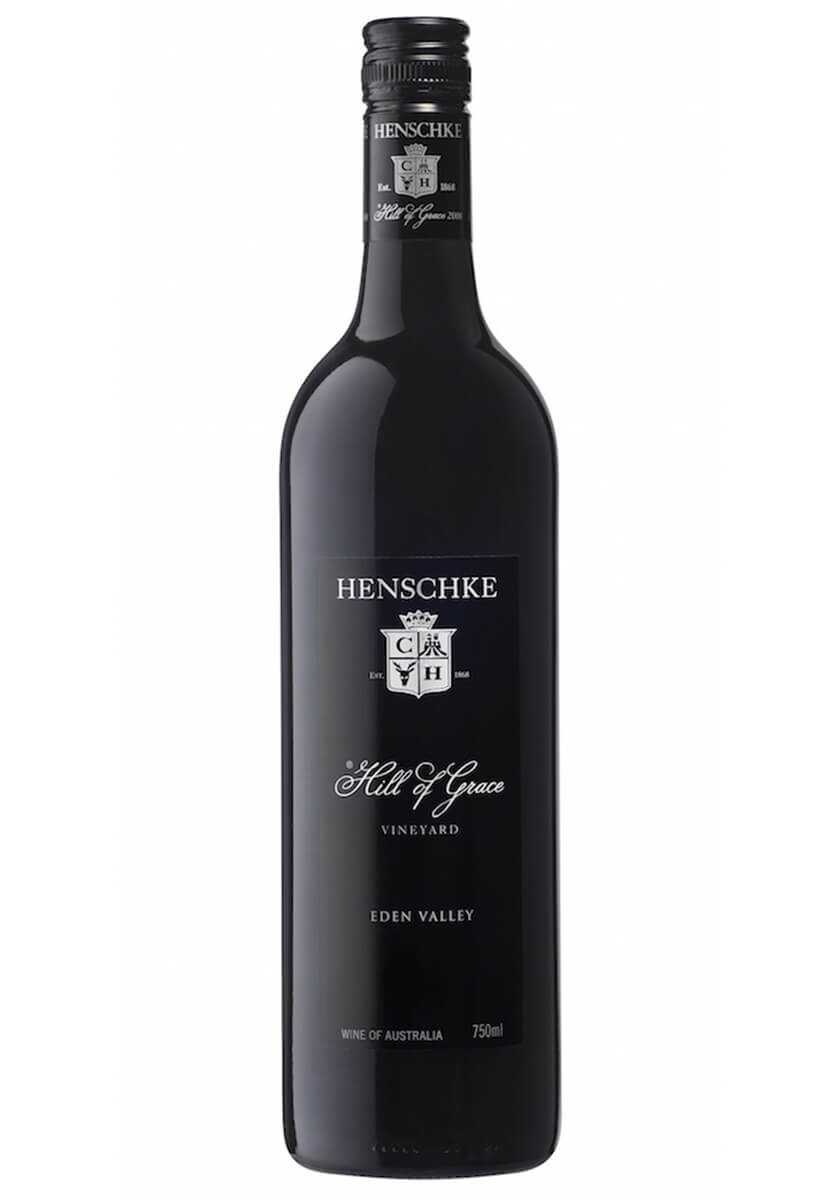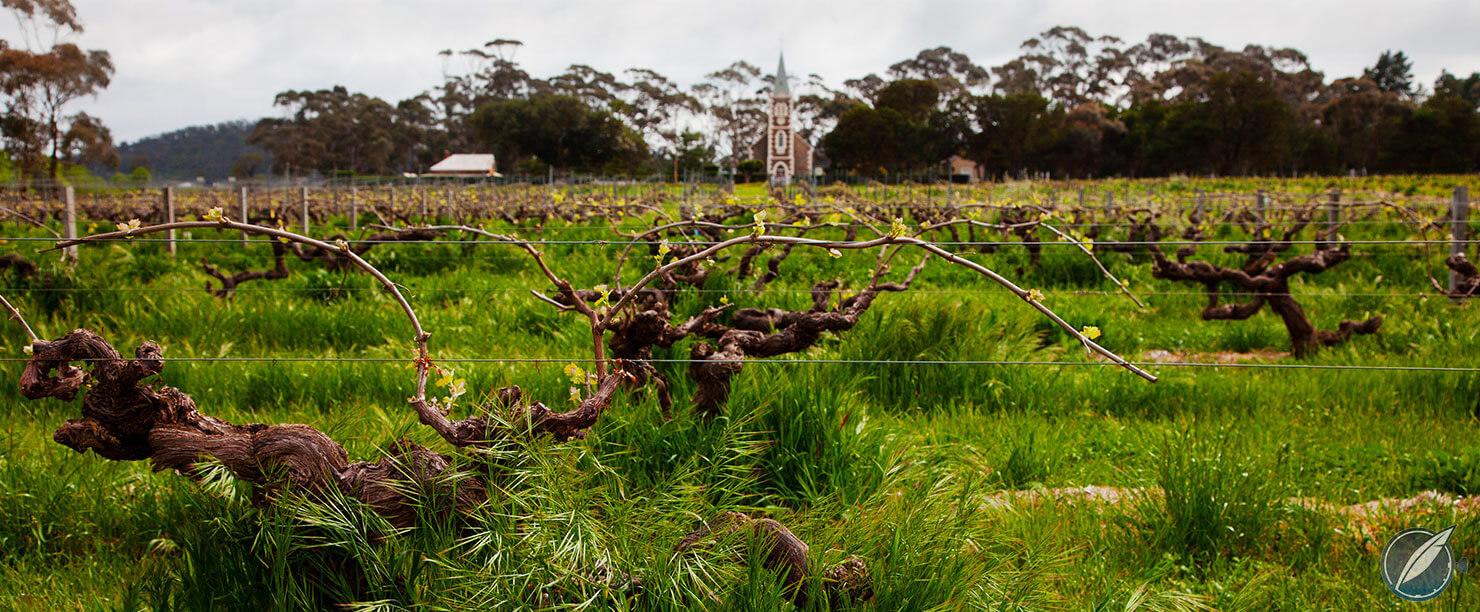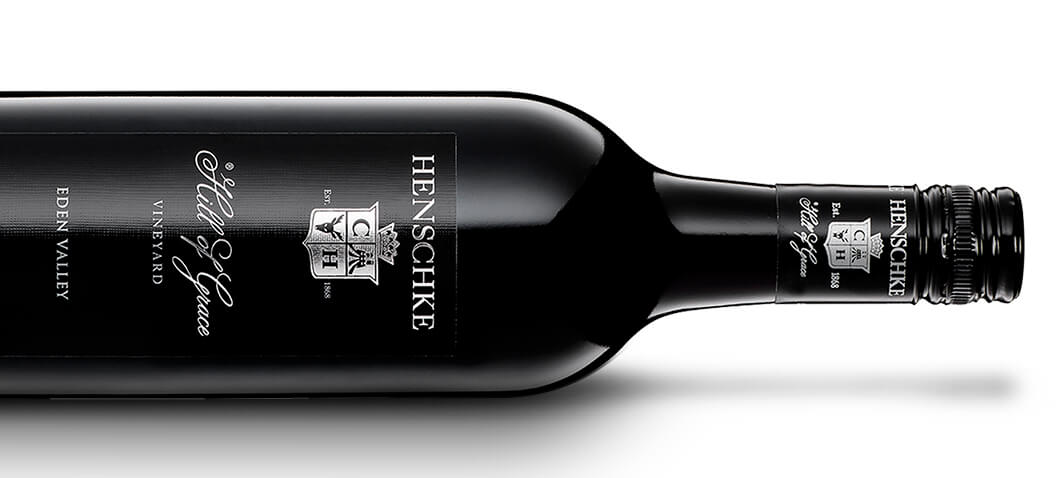by Ken Gargett
Henschke’s Hill of Grace is Australia’s greatest single-vineyard Shiraz. Some might even say it’s Australia’s greatest wine – a battle it would wage with Penfolds’ Grange and possibly Cullen’s Diana Madeline Cabernet Sauvignon and Clonakilla’s Shiraz Viognier. Plenty of others would challenge occasionally, but these are the wines that have proved their worth over many vintages.
Twenty years ago next month, as a wide-eyed and very excited (and far younger) wine writer, I attended my first full vertical of Hill of Grace – every wine back to the first release, the 1958. Over the years, I have seen them all at least once and some several times. It is a brilliant wine. I’ll confess that it is not on my “to buy” list – the current prices of around AUD$800 plus ($825 for the latest vintage) have pushed it well beyond that, though ironically back when I was a student I did buy a few bottles.

Henschke Hill of Grace
I remember a friend – we would often split wine purchases – telling me he was picking up a couple of cases of 1978 Hill of Grace (try doing that now) and asking if I wanted any. I agreed to take a couple of bottles only, as I thought $5.50 was far too expensive for an Aussie red.
Many years later, I opened them. One was horrendously corked (not a problem these days as Henschke has moved on to more reliable closures than stuffing dead tree bark in a bottle), but the other was simply glorious – more than worth the combined $11!

Henschke Hill of Grace vineyard
The Hill of Grace vineyard in the Eden Valley is wonderfully picturesque with its impossibly ancient, twisted, gnarled vines all nestled next to a wonderful old Lutheran church called Gnadenberg. It is named after a region in Silesia from which the Henschke ancestors, and many others in this district, hailed; it translates to “hill of grace,” or (wrongly) in some quarters, “unforgiving mountain,” which does not quite carry the same marketing cache.
It is extraordinary to think that the vineyard was planted almost a full century before the first bottle of Hill of Grace was made.
What is less well known is that the vineyard is not totally planted to Shiraz, nor is it all 160-year-old vines. The wine we know as Hill of Grace comes from a block within the vineyard known as “the Grandfathers.” This block is dry grown and was originally planted back in the 1850s/1860s.
The current Hill of Grace, to be released in early September 2018, is the 2013. As mentioned, the first was the 1958. It has been made every vintage since then with the exception of 1960, 1974, 2000, and 2011. Some years, the quantity is extremely low; 2003 came from a single barrel, and both the 2013 and 2014 were not much more.
The year 2013 was a dry one – dry winter, dry spring, and dry summer – giving low yields. Despite the dry, there were only four heat spikes in this period and a cooler-than-average January. Storms in late February saved the day. Harvesting took place over a shortened period: February 22 to March 7.
The oak program largely resides with local cooper A. P. John. This started in the early 1980s and has seen the dominance of American oak slowly reduced in favor of French. Around 20 percent of production is exported.
This is a wine with concentration, structure, and generosity. There are chocolate and cherry notes, spices, florals, vanilla bean, dark coffee, dark fruits, and even the merest hint of a nicely charred steak to be found on the nose. Good power, plenty of tannins, but they are micro-fine and silky. A supple texture and incredible length: it just goes on and on.
As good as it is now, this is a wine with potentially 40 years plus ahead of it. If one wants a score, 98+. And even that seems a little stingy.
The 2013 Hill of Grace is a tribute to the efforts of the Henschke family. Winemaker Stephen and viticulturist Prue are fifth generation and work with their son, Johann, the next winemaker, while Justine and Andreas also have key roles. The seventh generation is currently a bit young to do anything but crawl around the vines.

The family patriarch, Johann Christian Henschke, fled Silesia (a historic German-speaking central European country now mostly in Poland) in 1841 due to religious persecution. Tragically, his wife died on the voyage as did two children. Johann and his two surviving children headed for Lobethal shortly after arrival, where he remarried. He worked as a wheelwright, the name now given to the new wine Henschke has released to celebrate the family’s 150th anniversary. In 1862, he purchased land in the Keyneton region of the Barossa Ranges, as he believed it might make wine capable of matching the finest from Germany.
Fourth-generation Cyril was the only one of eleven children to show interest in wine making and it was he who set the path for the current custodians. It might seem a far cry now from the family’s modest operation to sitting comfortably in the top echelon of the world’s winemakers, and the journey has not always been easy, but there is no doubt that Henschke wines, especially the famed Hill of Grace, are now some of the very best and most highly desired wines on the planet.
For more information, please visit www.henschke.com.au.





















































Leave a Reply
Want to join the discussion?Feel free to contribute!